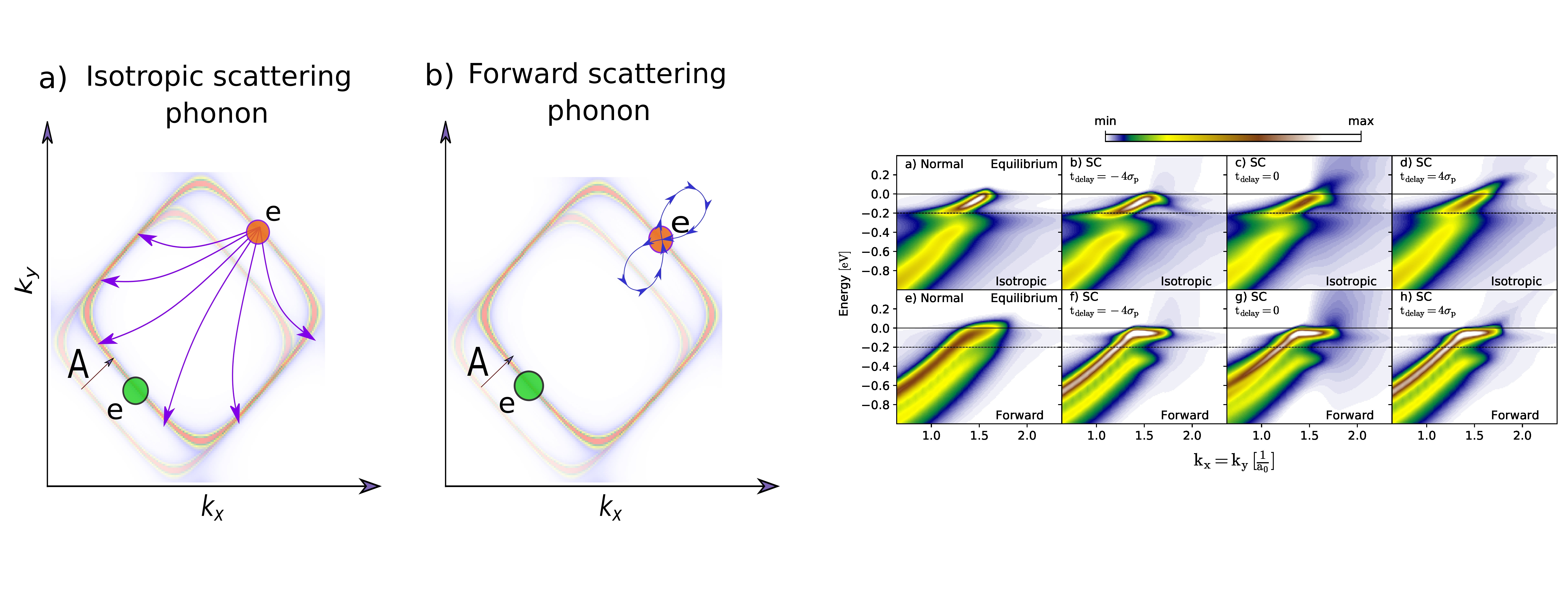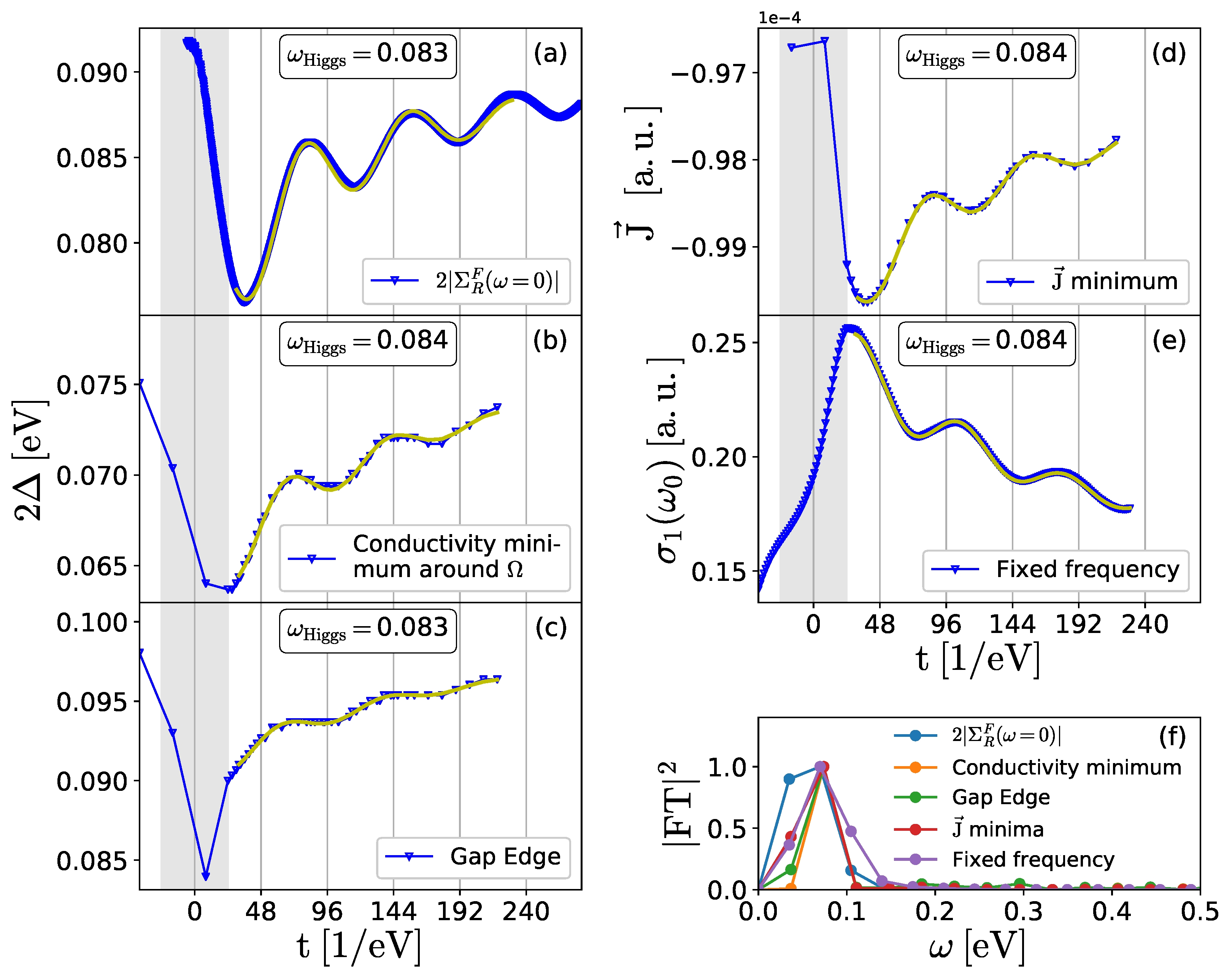Research
My research focuses on the dynamics of quasi-particles in correlated condensed matter systems. Mainly, I try to analyze the system from a non-equilibrium perspective where we perturb a correlated electron system by a time-dependent interaction and study properties of the developed non-equilibrium state in the time domain. I use density matrix theory and diagrammatic perturbation theory on the Keldysh contour to solve the relevant equations of motion for one and two-particle Green’s functions. I also use tools of density functional theory, dynamical mean-field theory, and semi-analytical methods to study the electronic, transport, and optical properties of a variety of systems ranging from superconductors, Mott insulators, topological insulators, and other phases of metals.
High $T_c$ superconductors
P01 Understanding the mechanism behind high temperature superconductivity has been one of the challenges in condensed
matter physics. The particular momentum structure of the electron-boson coupling plays a crucial role in the formation
of Cooper pairs, which can lead to the enhanced superconductivity. One such example is electron-phonon interaction that
is peaked in the forward direction. This interaction has been suggested as an essential ingredient for enhanced
superconductivity observed in FeSe monolayers on STO substrates. We study the superconducting state of a system
dominated by forward scattering using non-equilibrium methods and contrast its behavior against the standard isotropic
BCS case. Our study shows that the superconducting order in the forward-focused case is robust and persistent against
the pump-induced perturbations. The superconducting order parameter also exhibits a non-uniform melting in momentum
space, which could be measured by time-resolved ARPES. We show that this behavior is in sharp contrast to the isotropic
interaction case and propose that time-resolved approaches are a potentially powerful tool to differentiate the nature
of the dominant coupling in correlated materials.

Higgs mode in superconductors
Within the context of superconductivity, the excitations of superconducting condensate are of great interest. Experimentally, it is difficult to excite a superconducting order because the order parameter is a scalar field (spinless and chargeless), and does not couple to a vector electromagnetic (EM) field in the linear regime. Because a superconducting state exhibits broken $U(1)$ gauge symmetry, when the order is perturbed, $U(1)$ symmetry breaks spontaneously and results in two oscillating bosonic modes: first, the massless phase mode through Goldstone-Nambu mechanism and second, the massive amplitude mode through Higgs-Anderson mechanism. The phase mode gets pushed to the plasma frequency range because of coupling to Coulomb interactions. The other excitation, the Higgs mode resides at a frequency of twice the superconducting gap ($2\Delta$). Recently, it has been shown that the amplitude mode can be excited, and observed thorough the time-resolved optical conductivity when the system is driven out of equilibrium by an intense, ultra-fast EM field.
time-resolved optical conductivity
P02 We studied the dynamics of Cooper pairs in a s-wave superconductor when an ultra-fast laser pulse drives the system out of an equilibrium state. Through functional derivation, the optical conductivity is obtained with full vertex corrections and used to characterize the transient superconducting state. The transient optical conductivity shows the suppression of the superconducting order parameter in the time domain. The subsequent recovery of the order parameter exhibits oscillatory behavior that corresponds to the Higgs amplitude mode, and may be seen in several parts of the spectrum.

With moving condensate
P03 In addition to the higher order coupling of the Higgs mode to EM field, presence of a small supercurrent in the sample can also facilitate coupling of the Higgs mode to EM field in the linear-regime. Motivated by the recent theory and experimental work, we studied dynamics of the superconductivity condensate in the presence of a small supercurrent. We found that the condensate momentum induces a asymmetry of the spectral gap on the Fermi level which leads to momentum-dependent oscillation frequency and phase of the Higgs mode.
time-resolved response functions
In condensed matter physics, response functions have their own place for the mathematical complexity and experimental accessibility. Mathematically, any response function represents a two-particle retarded correlator that exhibits dynamics and statics of collective excitations: for example charge-charge susceptibility gives plasmons, current-current susceptibility gives conductivity and many others. Experimentally, many response functions can be measured and provide support and verification for the existence of a collective mode. Theoretically, the evaluation of a response function requires solution to the Bethe-Salpeter equation which is difficult to solve because we need to solve a self-consistent equation for the vertex.
Recently, we combined the tools from different areas and found a method to solve the BS equation using a numerical functional derivation approach. Through the functional derivation, the optical conductivity for superconducting state is obtained with full vertex corrections and used to characterize the transient superconducting state. We are now extending this method to evaluate other response functions.